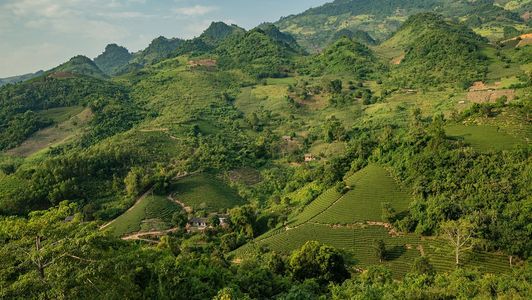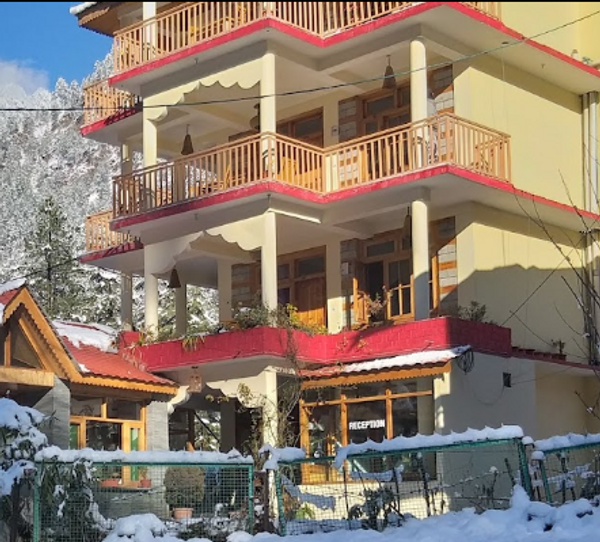Kudremukh National Park: Where Rolling Hills Meet Rich Wildlife
 Palakshi Meharwal
20 Aug, 2025
8 mins read
35
Palakshi Meharwal
20 Aug, 2025
8 mins read
35

Nestled in the heart of Karnataka’s Western Ghats, the Kudremukh National Park is a place where undulating green hills meet dense forests, and wildlife thrives in its natural habitat. Recognized as a UNESCO World Heritage Site, this park is more than just a trekking destination—it is a treasure trove of biodiversity and a sanctuary for nature lovers. Whether you’re an avid trekker, a wildlife enthusiast, or someone seeking peace in the wilderness, Kudremukh offers an experience that blends scenic beauty with ecological significance.
The Landscape: A Sea of Rolling Hills
The name Kudremukh translates to “horse’s face†in Kannada, inspired by the shape of one of the mountain peaks. True to its name, the region is a land of dramatic landscapes. Lush grasslands roll endlessly into the horizon, punctuated by dense shola forests, misty valleys, and sparkling streams.
The park spans nearly 600 square kilometers, making it one of the largest protected areas in Karnataka. Its elevation, averaging between 1,300 and 1,900 meters above sea level, ensures a cool climate throughout the year, a welcome relief for visitors escaping the summer heat of the plains.
During the monsoon season, the hills transform into a vivid carpet of green, with waterfalls gushing from hidden cliffs and streams swelling with rainwater. The Hanuman Gundi Falls, located within the park, is a particularly enchanting sight that attracts both trekkers and casual travelers.
Flora: A Rich Botanical Heritage
Kudremukh lies within the Western Ghats biodiversity hotspot, home to countless species of plants, many of which are endemic. The park’s vegetation is a unique mix of tropical evergreen forests, semi-evergreen forests, and montane grasslands.
The evergreen canopy shelters a variety of medicinal plants, orchids, and towering trees such as teak, eucalyptus, and casuarina. In the grasslands, seasonal wildflowers bloom, turning the slopes into colorful natural gardens during the monsoons. Botanists often highlight Kudremukh as an outdoor laboratory due to its variety of ecosystems existing in close proximity.
Wildlife: A Sanctuary for Rare Species
Kudremukh is equally celebrated for its wildlife. The park is part of the Global Tiger Conservation Landscape, and while tiger sightings are rare, camera traps have confirmed their presence. Other prominent inhabitants include leopards, wild dogs (dholes), and the elusive sloth bear.
For herbivores, the park is home to the lion-tailed macaque, one of the world’s most endangered primates, along with sambar deer, barking deer, and gaur (Indian bison). Birdwatchers will find the park particularly rewarding, as it hosts over 200 species of birds, including the Malabar trogon, imperial pigeon, and great hornbill.
The park’s rivers and streams sustain a range of aquatic life too, contributing to its role as a critical watershed for the region.
Trekking Trails: A Paradise for Hikers
For many travelers, Kudremukh is synonymous with trekking. The Kudremukh Peak trek, roughly 9 kilometers one way, is the crown jewel. Starting from Mullodi village, the trail passes through grasslands, streams, and dense patches of forest, eventually opening up to panoramic views of the rolling hills.
Other trails, such as those leading to Kurinjal Peak and Gangadikal Peak, are equally scenic but less crowded, offering solitude for seasoned hikers. Trekking here requires permission from the forest department, ensuring the ecosystem remains protected from over-tourism.
Best Time to Visit
The ideal time to explore Kudremukh is between October and February, when the weather is cool and visibility is clear. Trekkers who enjoy the monsoon magic can plan visits between June and September, though trails may be slippery. Summers are less popular, but the evergreen forests still offer a refreshing escape.
Conservation Efforts and Eco-Tourism
Kudremukh has faced ecological challenges in the past, particularly due to iron ore mining. Thankfully, after years of environmental advocacy, large-scale mining operations were halted in 2005, giving the park a chance to recover. Today, strict eco-tourism regulations help maintain a balance between tourism and conservation.
Visitors are encouraged to follow a “leave no trace†policy, minimizing plastic use, avoiding littering, and respecting wildlife habitats. These efforts ensure that Kudremukh remains a thriving ecosystem for generations to come.
How to Reach
- By Air: The nearest airport is Mangalore International Airport, about 130 km away.
- By Rail: The closest railway station is in Mangalore, which is well-connected to major Indian cities.
- By Road: Kudremukh is accessible via road from Mangalore, Chikmagalur, and Bangalore. State-run and private buses, as well as taxis, operate regularly on these routes.
Final Thoughts
Kudremukh National Park is more than just a trekking destination—it is a living museum of natural beauty and ecological diversity. From its rolling hills and lush forests to its rare wildlife and conservation success stories, the park embodies the essence of the Western Ghats. For travelers seeking an experience that combines adventure, serenity, and ecological awareness, Kudremukh remains one of India’s most rewarding destinations.
Written By:
Palakshi Meharwal



Hotels at your convenience
Now choose your stay according to your preference. From finding a place for your dream destination or a mere weekend getaway to business accommodations or brief stay, we have got you covered. Explore hotels as per your mood.


